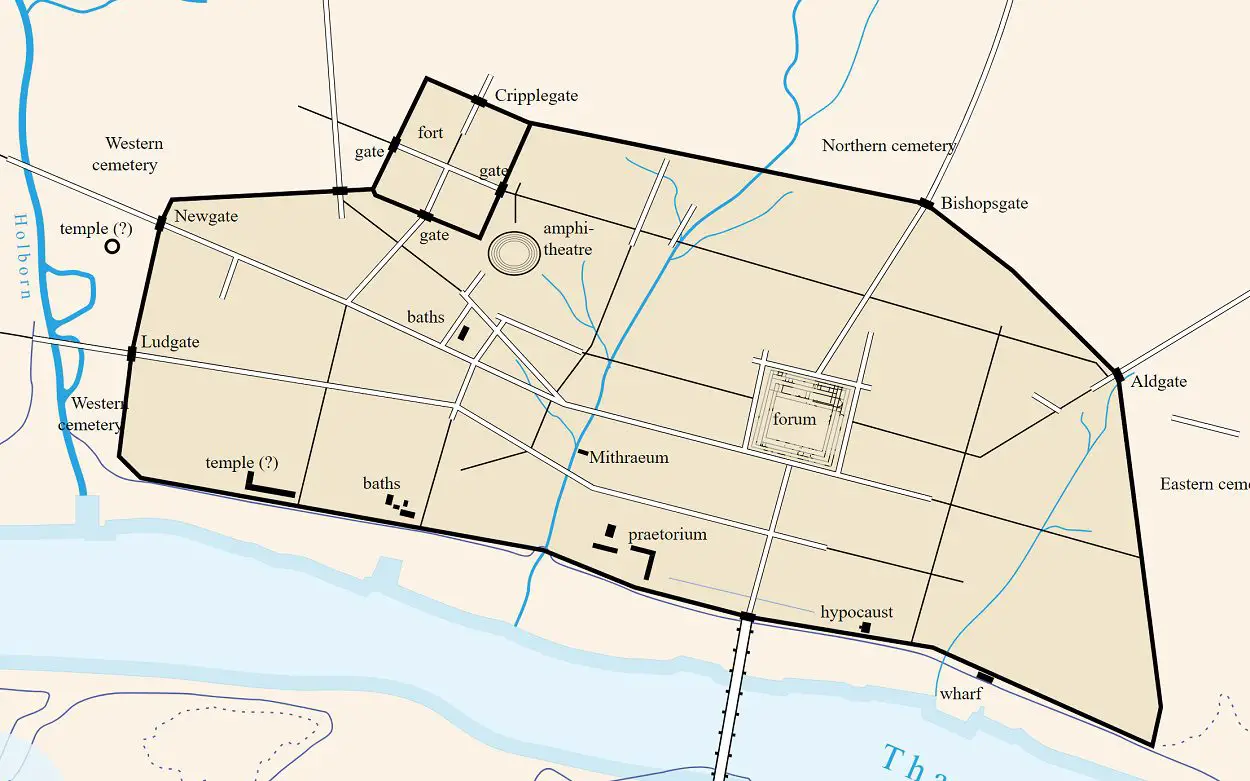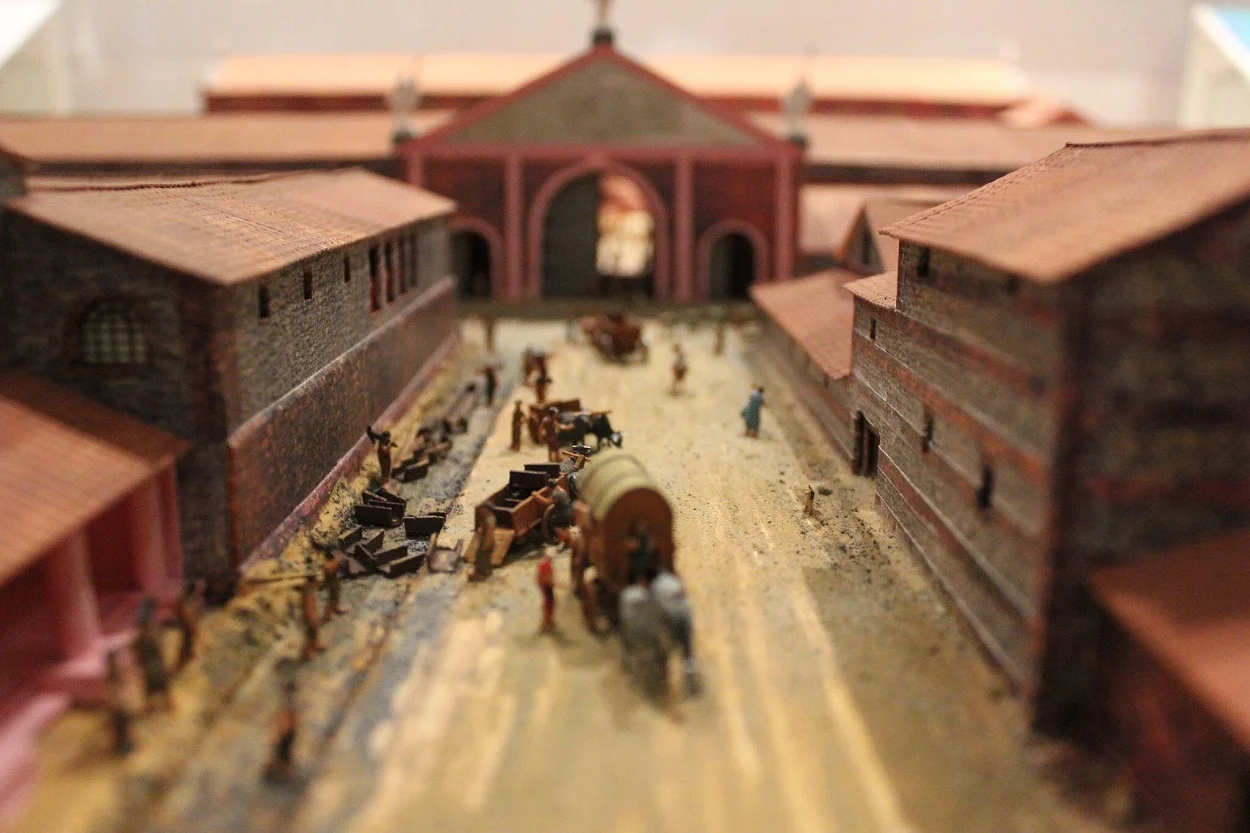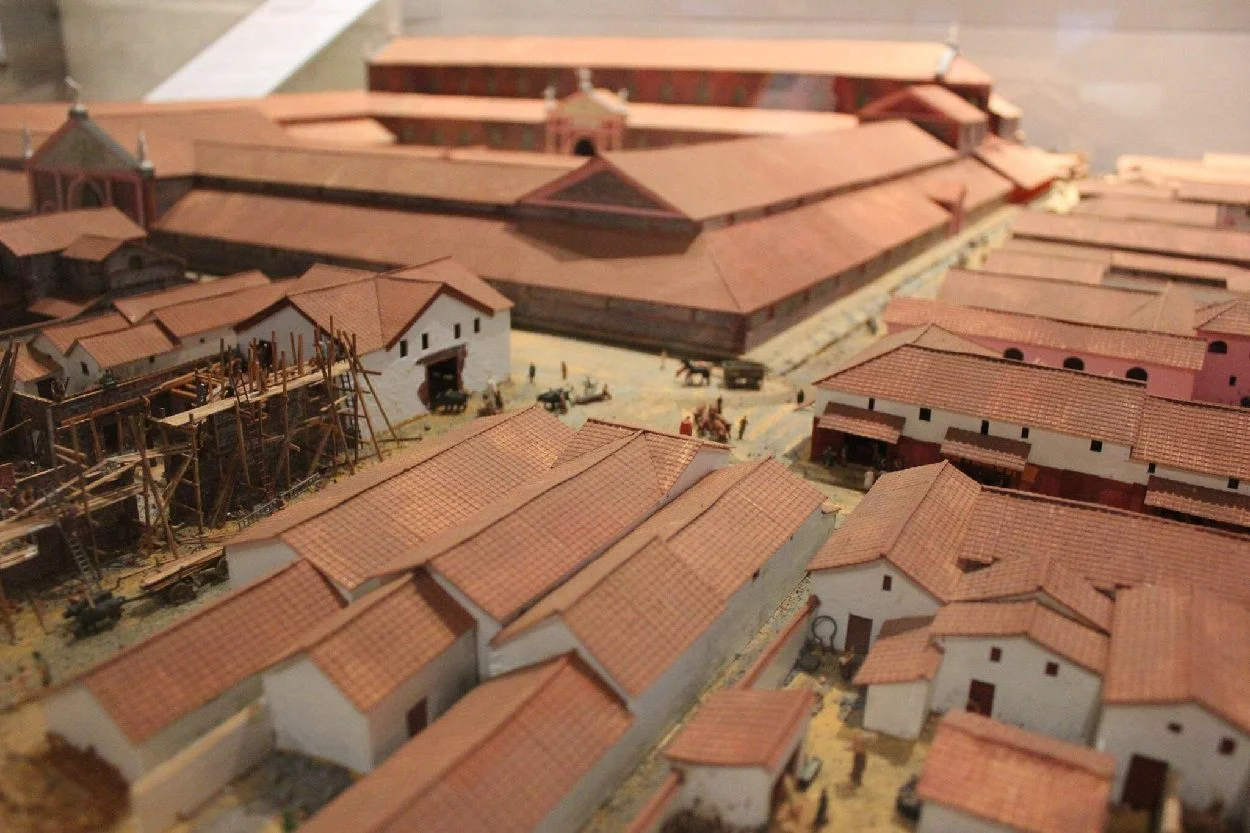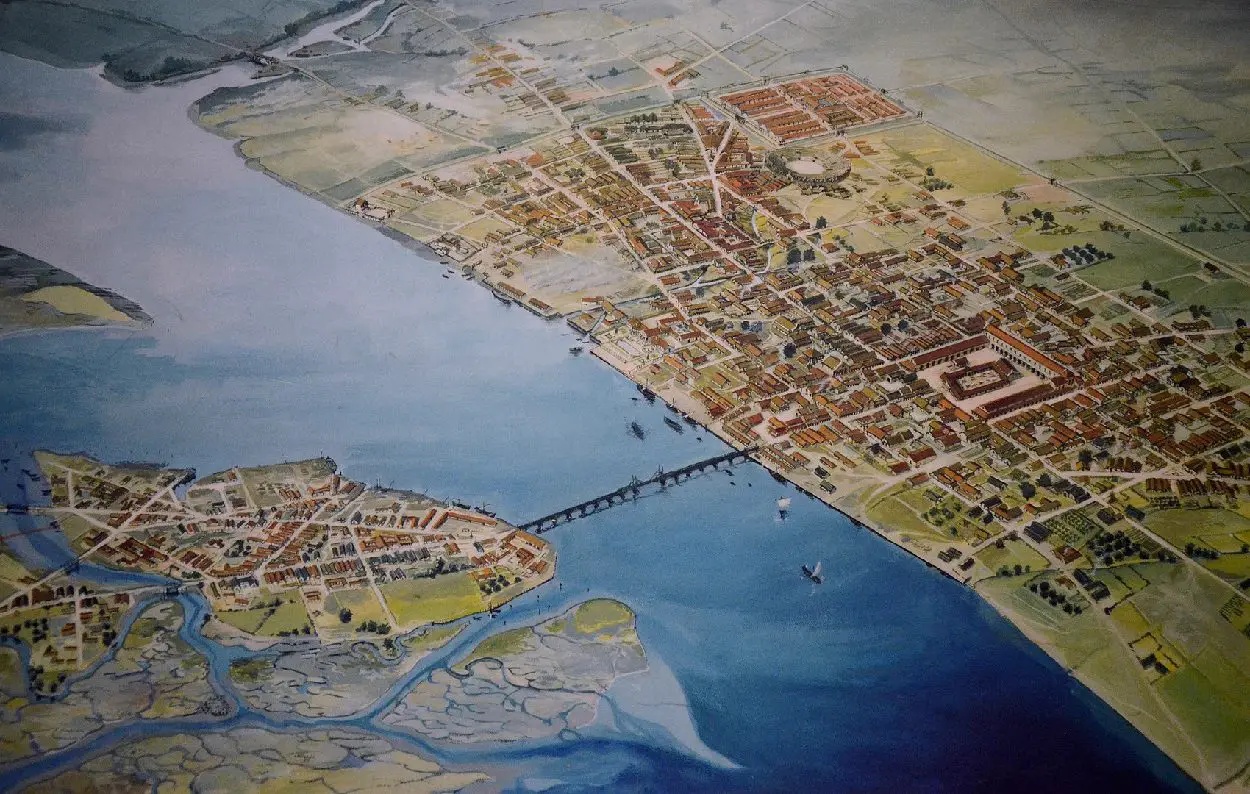In AD 43, the Roman emperor Claudius, launched an invasion of Britain, and over the next 45 years, the Roman army gradually extended its control over much of present-day England and Wales, and ventured into parts of Scotland.
Britain was inhabited by the Britons, native speakers of the Brythonic languages, with archaeological evidence in the Greater London area showing pre-Roman occupation at sites such as Ilford, Wimbledon and Epping Forest, where Iron Age forts, scattered settlements and enclosures can be found.
In north-west London in the borough of Harrow, there is also a giant 6-mile-long linear earthwork known as Grim’s Ditch, which some archaeologists suggest was constructed by the Catuvellauni tribe as a defence against the Roman incursion.
In AD 47, the Romans established a settlement on the River Thames, a settlement that would become the city of Londinium. The settlement was situated at a bridgehead on the north bank of the river at a ford, where a major road nexus would converge at a bridge crossing.
The purpose of the settlement is debated, with one theory proposing that Londinium was built as a planned commercial port or a civilian enterprise.
The archaeological evidence from this period supports a cosmopolitan community of merchants from across the Empire. The early settlement occupied a relatively small area, about 350 acres, which is roughly the size of Hyde Park. At this time, the capital was located at Camulodunum, present-day Colchester, which therefore claims to be Britain’s first city.
In AD 60, a little more than ten years after Londinium was founded, Prasutagus, the king of the Iceni tribe died, dividing his wealth and lands between Rome and his two daughters in his will. As it was common practice for a client king to leave his kingdom to Rome on his death, the Roman’s ignored the will and seized the entire estate. Prasutagus’s widow, Bouddica, was flogged, and her daughters were raped.
At the time, the bulk of Roman forces under the command of Gaius Suetonius Paulinus, was campaigning to crush the stronghold of the druids on the island of Mona, present-day Anglesey, off the northwest coast of Wales.
Bouddica led a tribal coalition in a large-scale revolt, that marched on Camulodunum, Londinium, and Verulamium. All three Roman centres were destroyed, causing shockwaves throughout the Roman World.
Cassius Dio, a Roman historian from the mid 2nd century describes:
“…a terrible disaster occurred in Britain. Two cities were sacked, eighty thousand of the Romans and of their allies perished, and the island was lost to Rome. Moreover, all this ruin was brought upon the Romans by a woman, a fact which in itself caused them the greatest shame…. But the person who was chiefly instrumental in rousing the natives and persuading them to fight the Romans, the person who was thought worthy to be their leader and who directed the conduct of the entire war, was Bouddica, a Briton woman of the royal family and possessed of greater intelligence than often belongs to women…. In stature she was very tall, in appearance most terrifying, in the glance of her eye most fierce, and her voice was harsh; a great mass of the tawniest hair fell to her hips; around her neck was a large golden necklace; and she wore a tunic over which a thick mantle was fastened with a brooch.”
While the Britons continued their destruction, Paulinus regrouped his forces, and although heavily outnumbered, defeated the allied tribes in a final battle which inflicted heavy losses on the Britons.
According to the Roman historian, Gaius Suetonius Tranquillus, the crisis almost persuaded Nero to abandon Britannia, but with the revolt brought to a decisive end, the occupation continued.
Londinium was rebuilt as a planned Roman city that followed the typical Roman grid system. A temporary fort was erected in modern Fenchurch Street, with a later stone fort constructed in AD 120, on the north-west axis of the main settlement.

The walls of the fort were built to a height of five metres and was reinforced with defensive towers on each corner. Each side had a central gatehouse, leading to a thoroughfare that dissected through the fort’s interior, allowing access to the administrative buildings and barracks.
The fort encompassed an area of 12 acres, enough to house up to 1000 garrisoned soldiers, but rather than support a substantial standing military force, it would later house the ceremonial guard that served the governor of Britannia.
As the settlement grew, it extended west to Ludgate Hill and east to Tower Hill, centred on Cornhill and the River Walbrook. Today the boundaries of Roman London are located in the City of London, the primary central business district of London.

By the end of the 1st century AD, Londinium had become one of the largest cities in Roman Britain, replacing Camulodunum as the provincial capital. The city was now an important port for trade between Roman Britain and the Roman provinces on the continent.
During the 2nd century AD, Londinium had reached its peak with around 45,000-60,000 inhabitants, covering an area of 330 acres. The city contained a large forum and basilica, one of the largest in the Roman Empire north of the Alps, several bathhouse complexes and temples, an amphitheatre, the Governors Palace and many townhouses.

Between AD 190 and 225, the Romans built the London Wall, a defensive 3 mile long ragstone construction around the landward side of the city. Along with Hadrian’s Wall and the Roman road network, the London Wall was one of the largest construction projects carried out in Roman Britain.
Although the reason for the wall’s construction is unknown, some historians have connected it with the Pictish invasion during the AD 180’s. Others have linked it with Clodius Albinus, the British governor who attempted to usurp Septimius Severus in the AD 190’s.
Londinium’s status began to decline during the 5th century AD, with many public buildings falling into disrepair and communication with the rest of the Roman Empire beginning to weaken. Trade broke down. Officials went unpaid, and Romano-British troops elected their own local leaders.
Archaeologists have found evidence that a small number of wealthy families continued to maintain a Roman lifestyle until the middle of the 5th century AD, inhabiting villas in the south-eastern corner of the city.
By the end of the 5th century AD, Londinium was a deserted ruin.
Over the next century, Angles, Saxons, Jutes, and Frisians arrived and established tribal areas and kingdoms in the former Roman province. What remained of Londinium would reside in the territory of the Kingdom of the East Saxons, where a new Anglo Saxon town called Lundenwic emerged one mile to the west.
Repeated Viking raids during the 9th century led to the re-population of Londinium for safety behind the Roman walls. The Anglo-Saxon Chronicle notes that Alfred the Great “re-founded” London, known then as Lundenburg.
This marked the new beginnings of one of the greatest cities the world has ever known.

Header Image Credit : Carole Raddato





